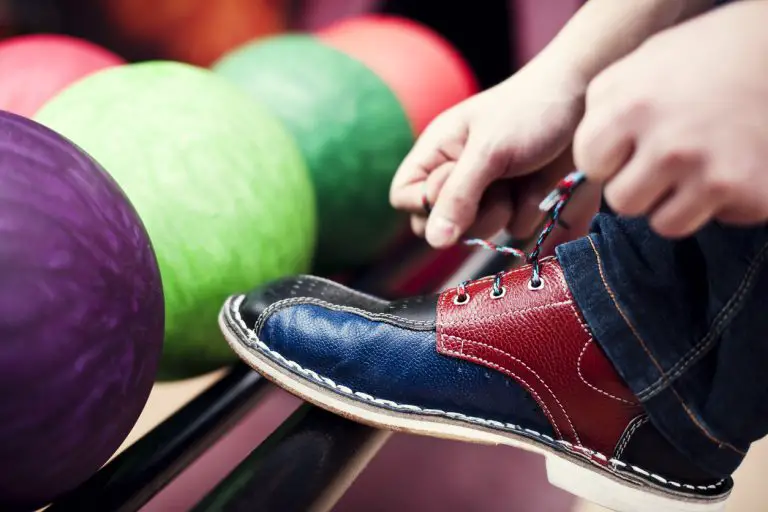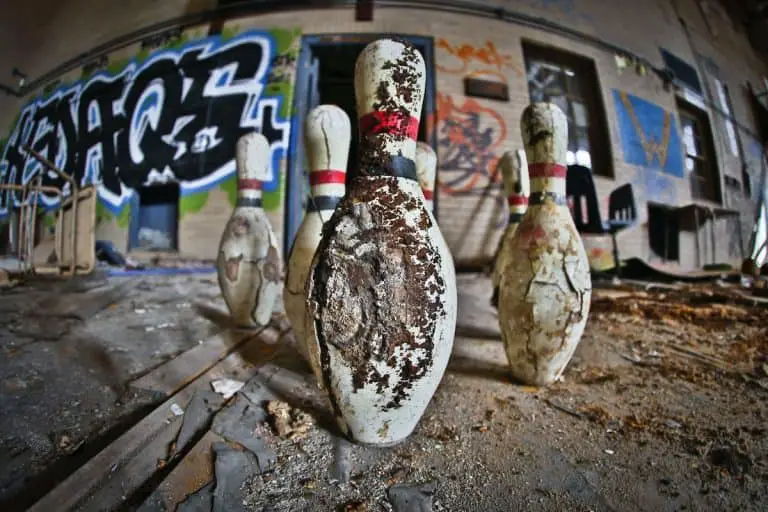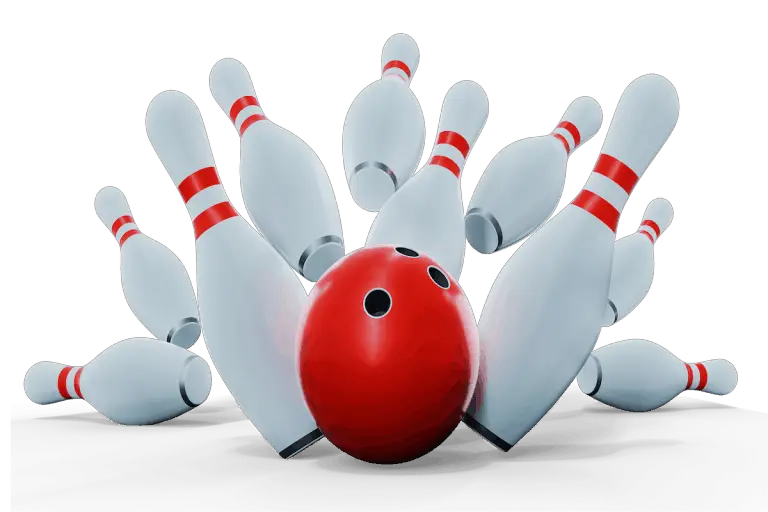Why Are Bowling Balls Scented?
Bowling balls specs include everything from something obvious, such as a ball cannot weigh more than 16 pounds (7.26 kg), to minute details such as limitations on the surface hardness. Nothing in the specifications says anything about scenting. But why would anyone scent a bowling ball in the first place?
Storm bowling balls were first scented to help them stand out from the competition. They have since become popular among bowlers of all levels. Some use their favorite bowling ball scent as a motivation tool or good luck charm. The aromas include everything from blueberry, cinnamon, and birthday cake.
Have you ever brought a bowling ball close to your face and realized it doesn’t smell good? If not, take a sniff test next time you bowl, and you’ll be unpleasantly surprised. Read on to find out how scented bowling balls started, how they are made, and who uses them.
Why Would Someone Scent Bowling Balls?
If you think about it, bowling balls don’t smell good. They take on the odors of a bowling alley and the ball’s users. Afterward, they are stored with other smelly items, such as shoes and gloves. A bowler doesn’t notice the smell until the ball is an inch or two away from the nose, but the it hits you.
On the other hand, does a regular bowler notice that the smell? Maybe they get used to it and don’t think twice about it. But that applies to the player who bowls regularly. What about customers who come in a couple of times a month?
That’s what Bill Chrisman was thinking about when he came up with the idea of scenting bowling balls.
Who Developed Scented Bowling Balls?
Bill Chrisman was president of Storm when the idea of scented bowling balls first came to him. He knew, based on his work with cleaners, that people associate scents with experiences. And Chrisman wanted people to associate bowling alleys with refreshing scents.
That was not his only reason, though. By 2000 bowling sales were in decline, and Chrisman wanted an edge for Storm’s balls. His first venture into the bowling business was a cleaner he had developed for urethane balls. In the early 1990s, he and a partner began manufacturing balls. As the company expanded, Chrisman looked for ways to increase sales.
He decided that scent could be a way to differentiate Storm balls. Once a customer notices the smell, Chrisman thought they would be intrigued. Given two equal balls, they might pick the scented one. In other words, Chrisman decided to try scented balls as a marketing gimmick. And it worked.
Urban Legends
Several false stories are going around about the invention of scented balls. One is that the first scented ball came about due to a manufacturing defect. When the people at Storm realized the problem and called the distributors to stop selling them, most of the balls had already been sold because people loved the smell.
Another legend is that a staff member took his wife on a tour of the factory. Because she complained about the smell, Chrisman ordered that the balls had to be scented. If someone tells you one of these stories, you know the truth. Whether you tell them or not—that is up to you.
How Is the Scent Added?
Manufacturing a bowling ball is a multiple-step process:
- A liquid resin is created in specialized mixers called “batchers.”
- The resins are heated to 260 degrees before being poured into molds for the cores.
- The cores cool for 6 minutes and are removed from the molds.
- A filler material is added around the cores and weights to make sure the balls are round.
- Next, the balls are put into another mold to add the coverstock. The scents are added to the coverstock mix.
- The coverstock hardens in two minutes. Afterward, the ball is taken out of the mold to cool overnight.
- Then the balls are polished, sanded, and engraved.
Are There Any Advantages to Scented Balls?
Those who use scented Storm balls have noticed several advantages to them:
- Relaxing. Some players find the smell relaxes them. They also use the scent as part of their throwing routine.
- Distracting. Players claim that the scent can distract players who are not used to it. In 2005, pro bowler Ryan Shafer said that he beat a player who was distracted by his Storm’s licorice scent.
- Extra hook. Bowlers report that the balls have a little more hook because of the increased tackiness of the balls.
Bowling alley owners and retailers who rent or sell scented balls like how they freshen up the house. So it looks like Bill Chrisman’s gamble has paid off.
Bowling Questions is an Amazon Associate. As an Amazon Associate I earn from qualifying purchases. We maintain numberous other affiliate relationships. Using links on this site to purchase items from affiliate vendors does not increase cost for the buyer. You can read our complete legal information for more details.
Do Other Manufacturers Make Scented Balls?
Chrisman began obtaining a patent for scented bowling balls in 2001, and the application was finally granted in 2010. Since Chrisman created the product to have Storm balls stand out, he would have a little financial incentive to let other manufacturers use the process.
Also, Storm markets its balls to advanced and sport bowlers. Since that is a shrinking market, letting Brunswick or another manufacturer sell scented balls would further decrease Storm’s market share.
Who Buys Scented Bowling Balls?
Although scented bowling balls seem like a novelty that only beginners would buy, the opposite is true. Storm’s balls are used by many top-level players, including Randy Pedersen, who won 13 Professional Bowling Association titles before he retired. Jason Belmonte, who won the 2020 US Open, is another Storm bowler.
Price points are another indicator of who buys Storm balls. Although a beginner’s ball can sell for $40 to $60, the average price of a bowling ball is in the $100-150 range. Storm does sell the Storm Mix Blue for under $90, but a Storm Trend retails for around $175. Most beginners would not pay that much for a ball.
What Scents Are Available?
Storm currently has 7 product lines and at least 24 scents. Many of them are fruit-inspired, such as:
- Blueberry
- Boysenberry
- Cranberry
- Grape
- Sweet plum
A few are flavors commonly used in food:
- Cinnamon
- Vanilla
- Peppermint
And some scents are related to food or drinks, including:
- White Sangria
- Cinnamon Streusel
- Frosted cake
- Funnel cake
- Orange Ambrosia
Then there are the flavors that defy description:
- Volcano
- Grapevine
- Birthday cake
The company can produce 10,000 or more fragrances, including bacon, French fries, and pepperoni. Just remember–the balls should be sniffed, not licked or eaten.
Does the Scent Last?
A bowling ball that receives proper maintenance should last somewhere between 5 to 10 years before it needs to be replaced. A good maintenance schedule, as well as storing it in ambient temperatures, help them last longer. So once the ball is 5 to 10 years old, it would need to be replaced anyway.
But does the scent last that long? The answer depends on who you ask. For example, most bowlers on the Bowling Chat forum report that the scent can last for ten years, or in a few cases, even longer. One player reported that the balls he bought in 2005 were still scented. Another player reported that cleaning and surfacing the balls freshen them up.
One player on a Bowling Boards forum reported that his scented ball did not last long. The player also wrote that he used Reacta Clean to clean his ball, and that might have something to do with it.
The majority of players report that their Storm balls stay scented for the lifetime of a ball.
Bottom Line
You might think scented bowling balls are a bit silly or a fad that will go by the wayside. Many top-level players disagree. They claim that once you start using a Storm ball, there’s no going back.
Sources
- Google Patents: Scented Bowling Balls and Methods
- Bowlingball: Bowling Ball Specifications
- Richmond 40 Bowl: When Is It Time to Replace a Bowling Ball?
- Storm Bowling: 20 Years and Counting
- Bowling Chat Forum: How Long Does Storm Ball Scent Last?
- Bowling Boards Forum: How Many Different Flavors Does Storm Have?
- KSL: How Are Bowling Balls Made







